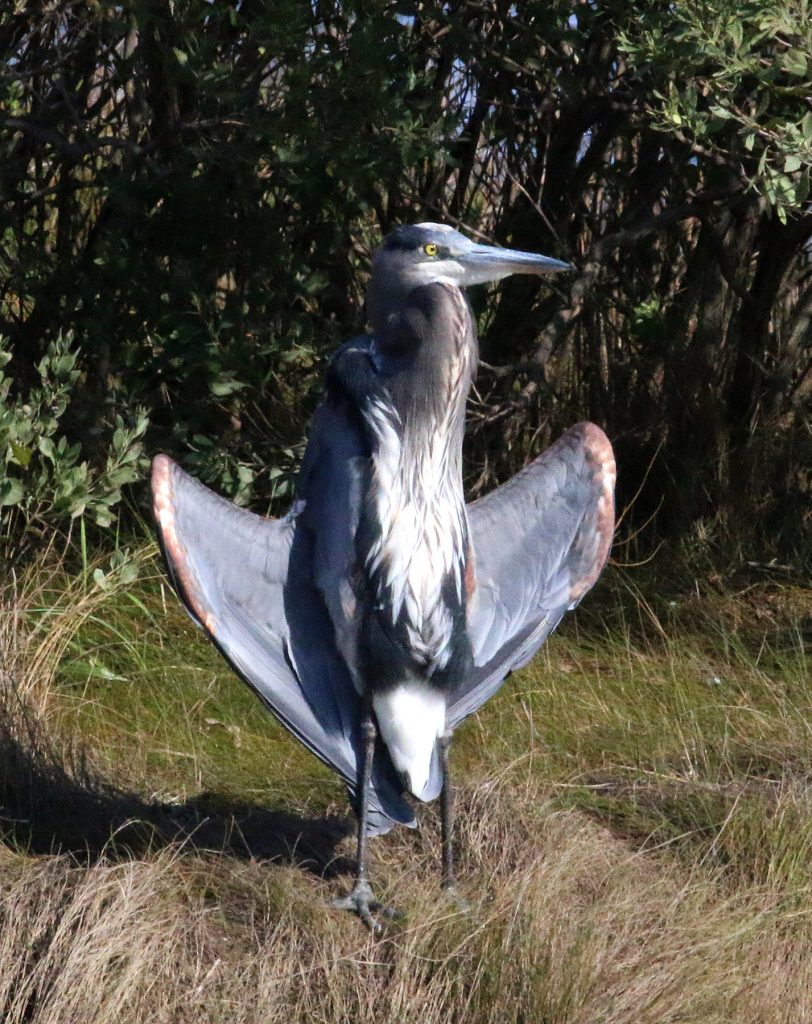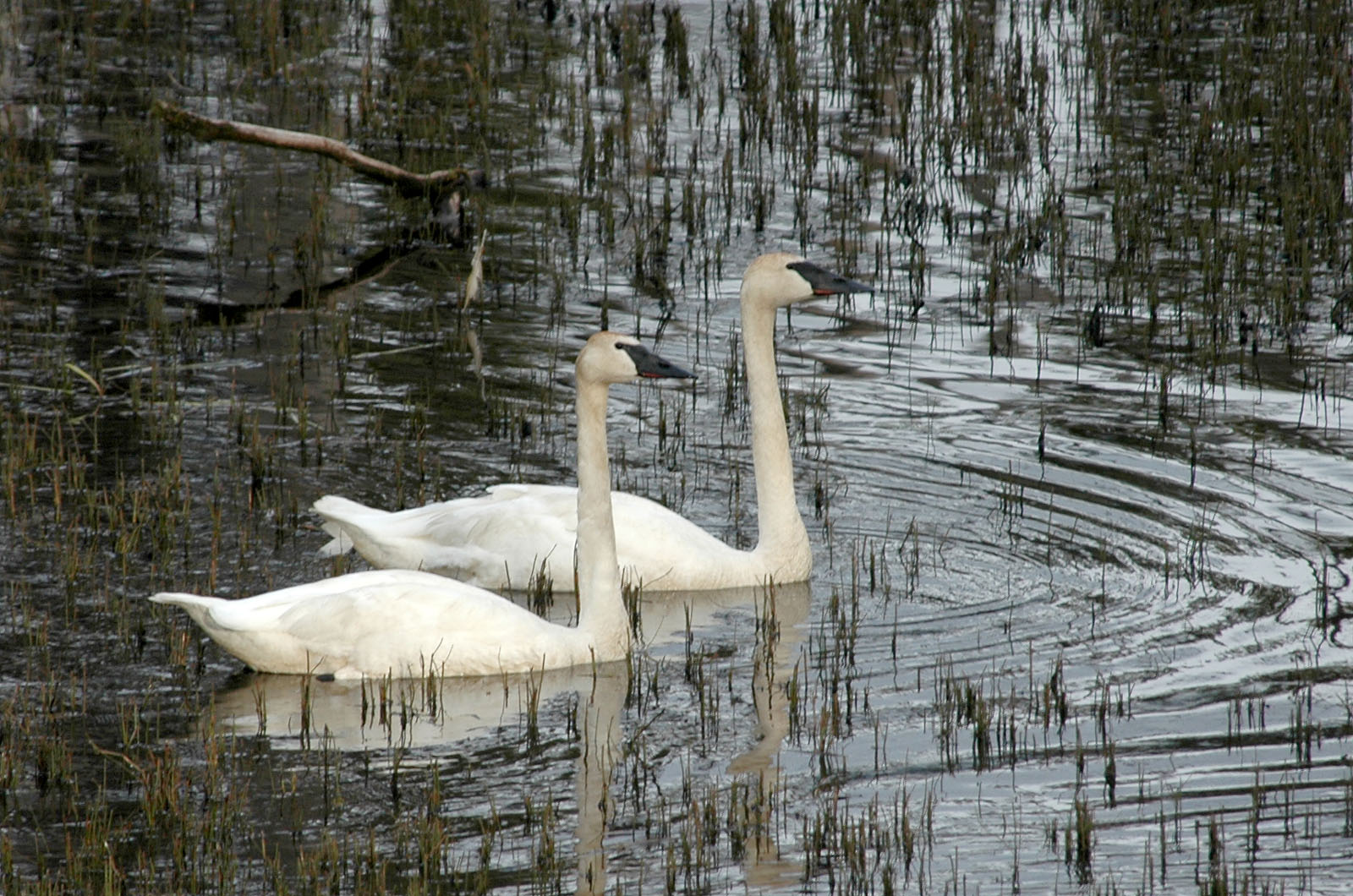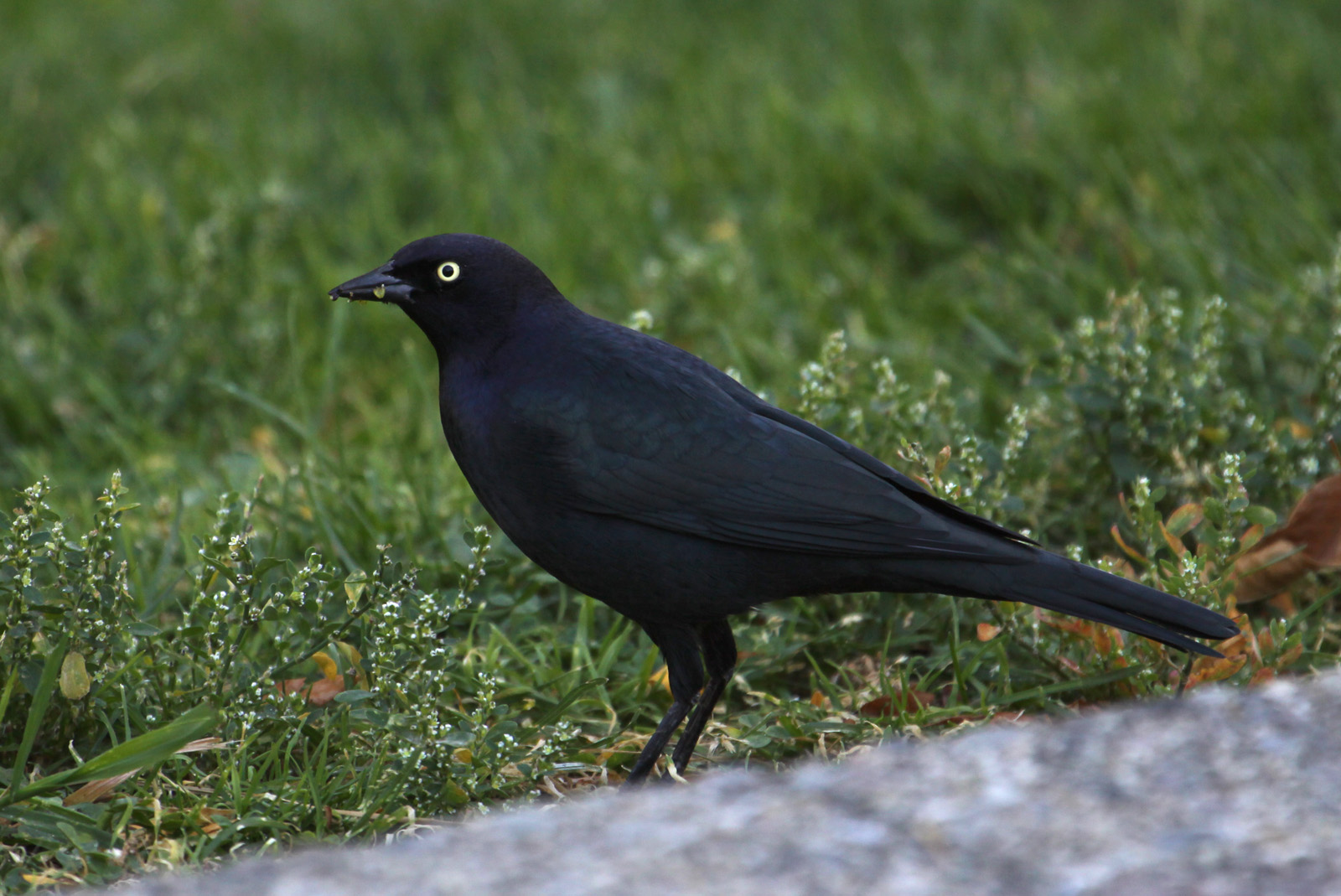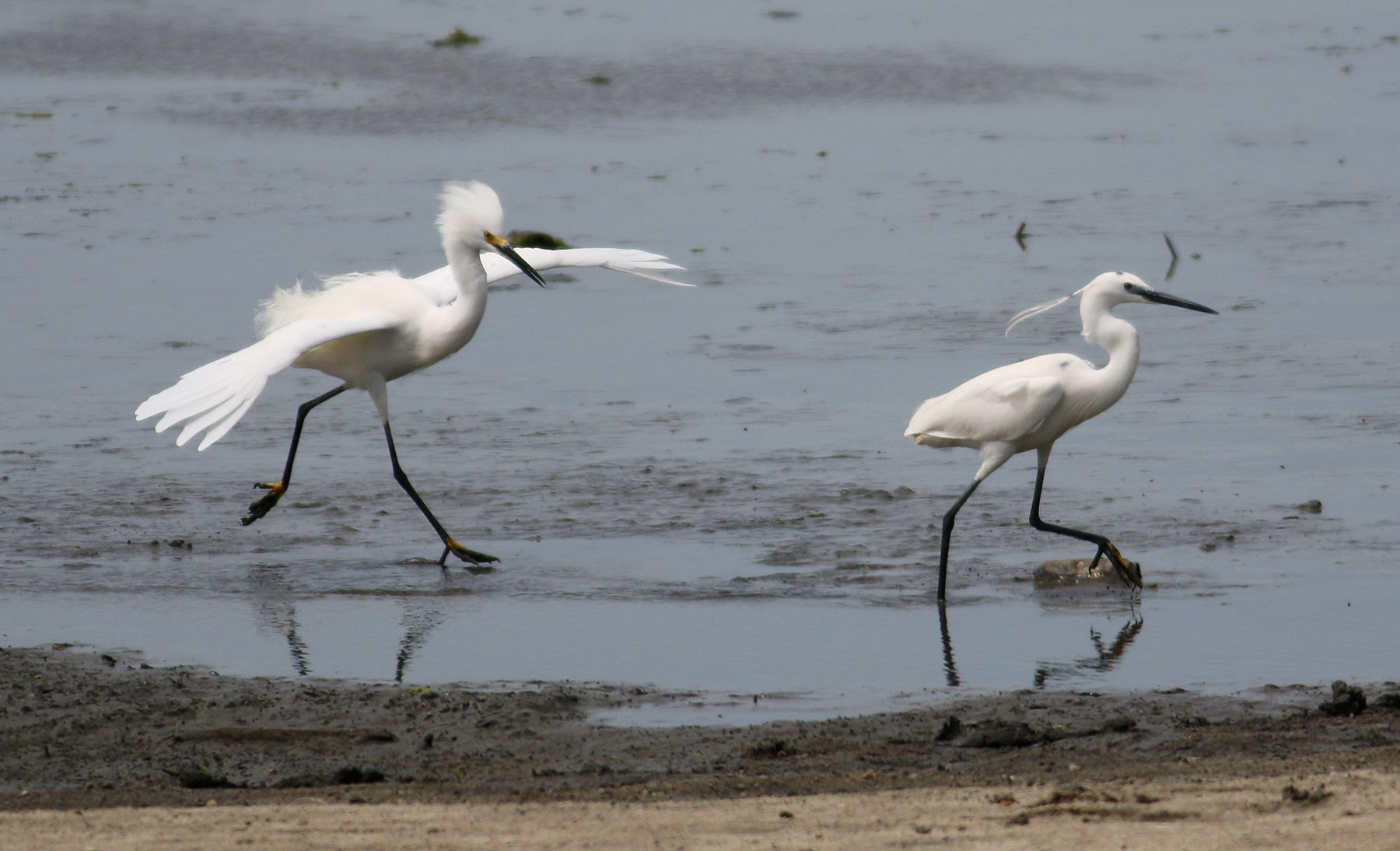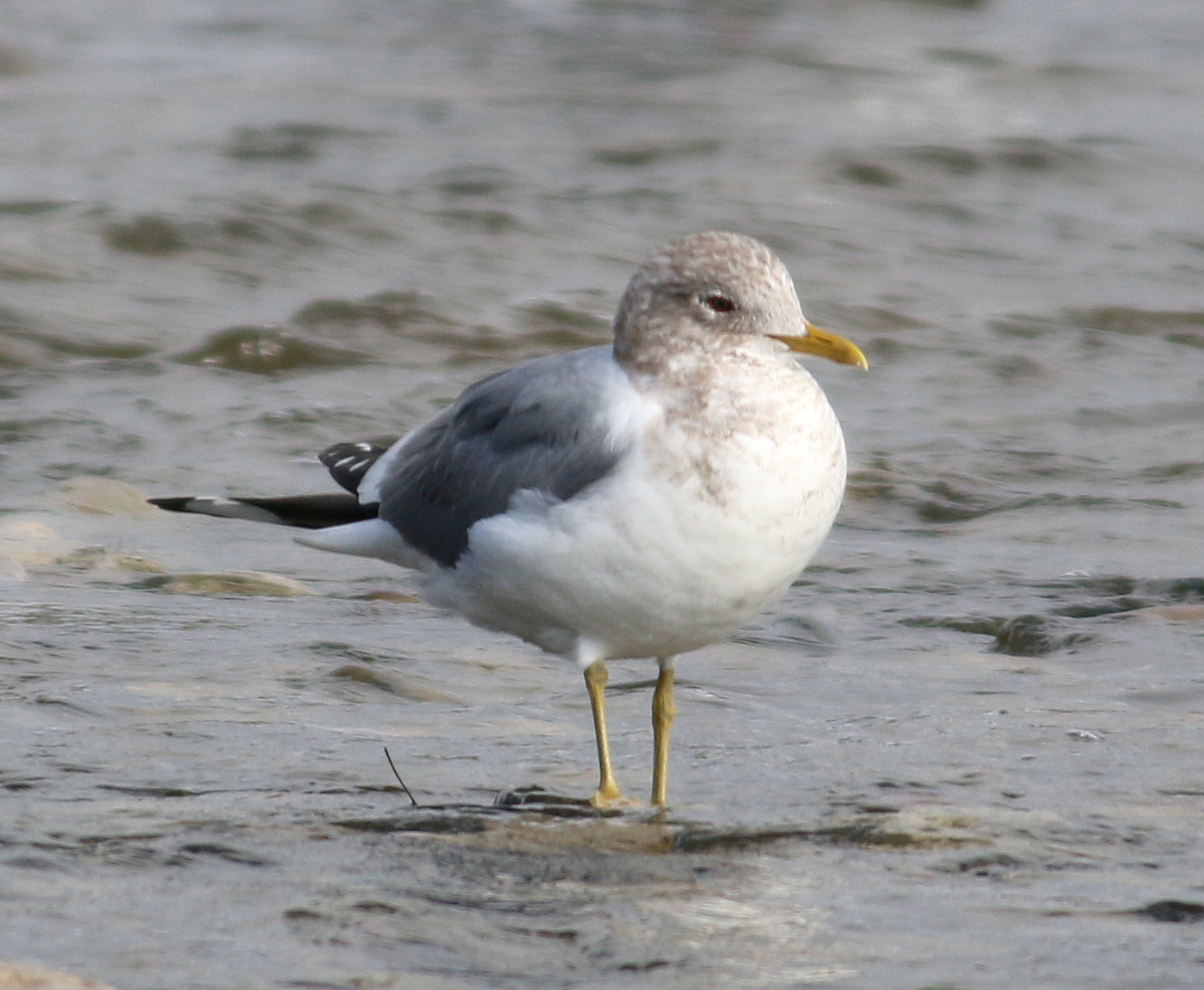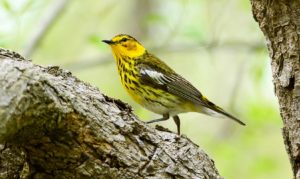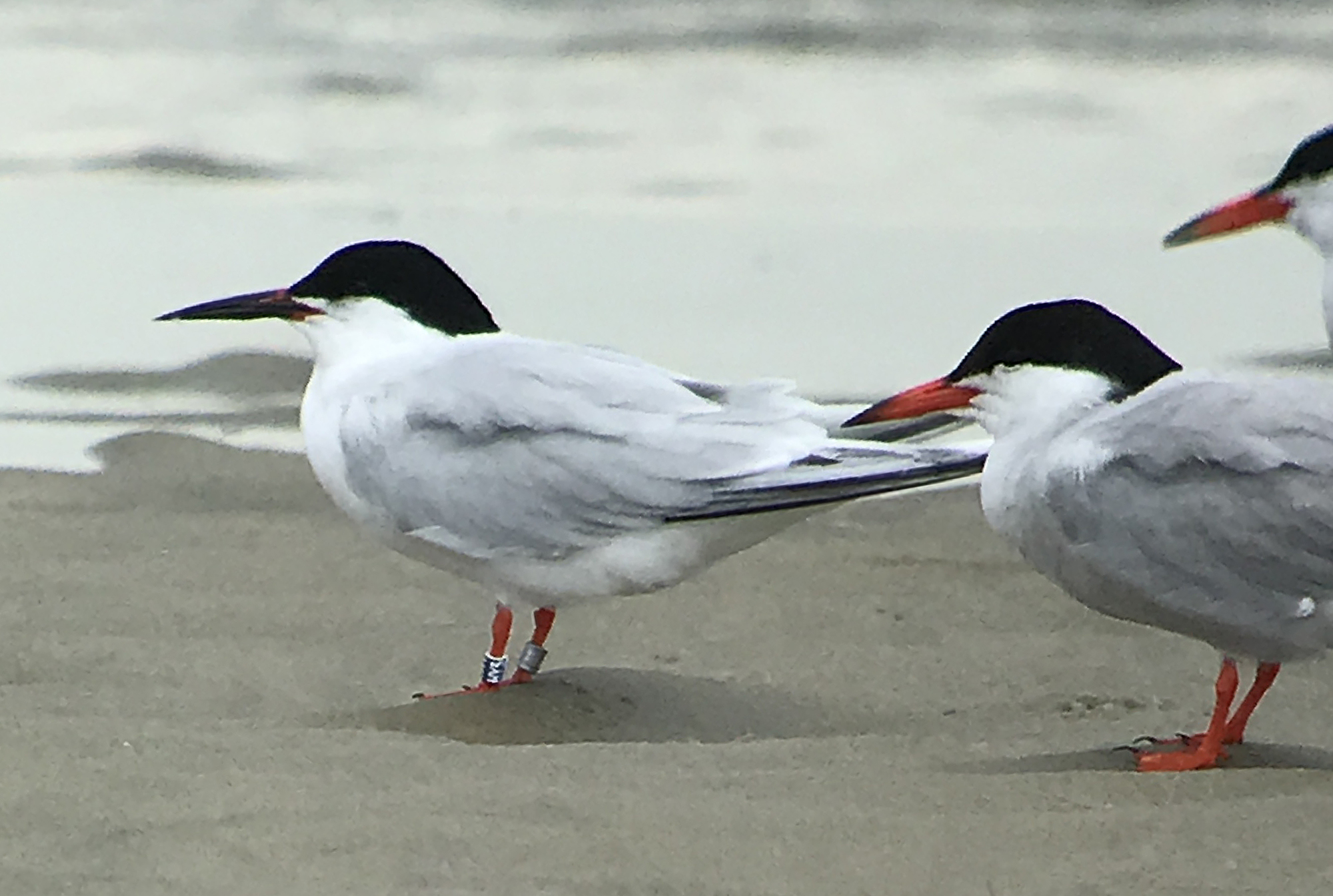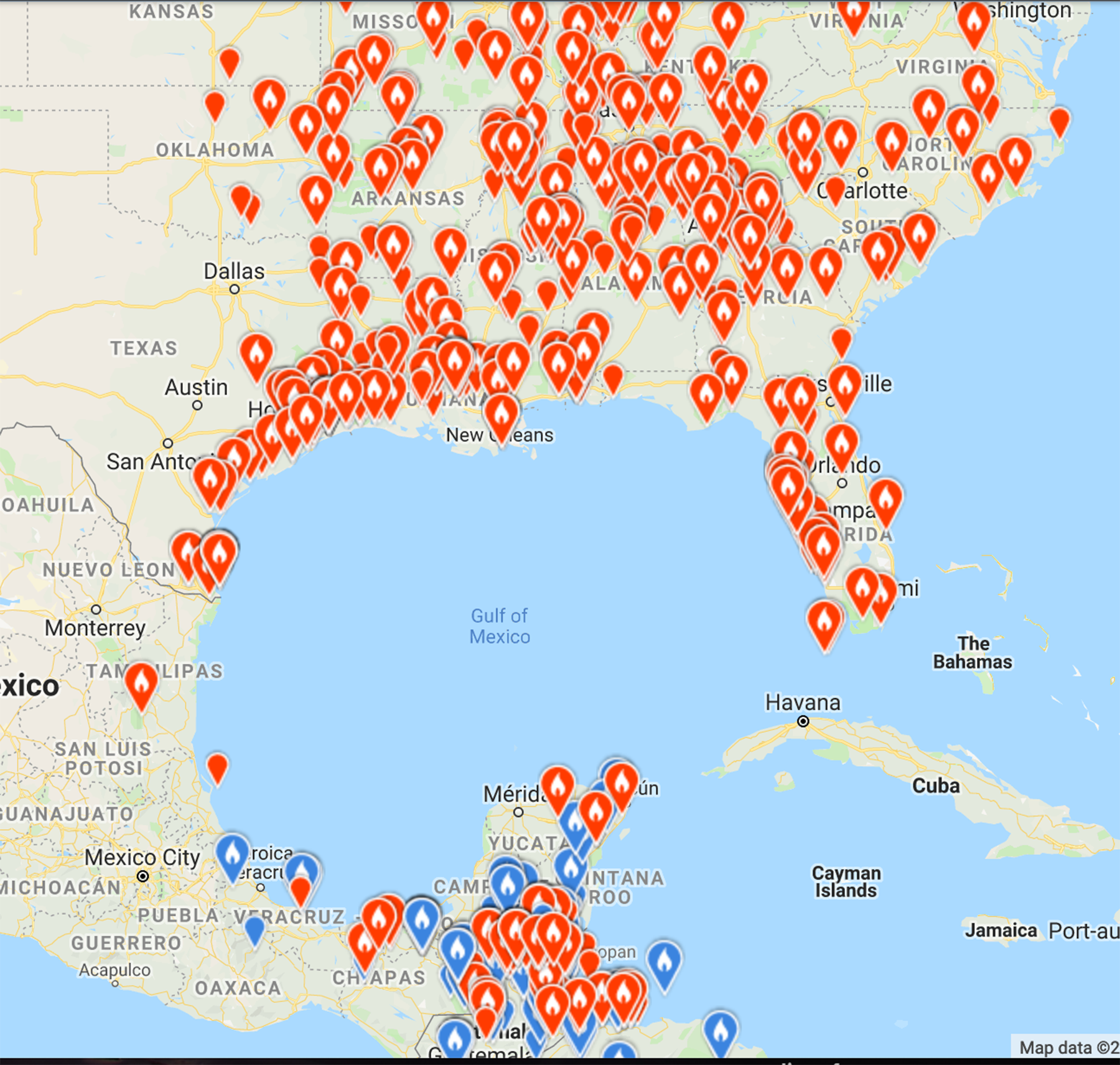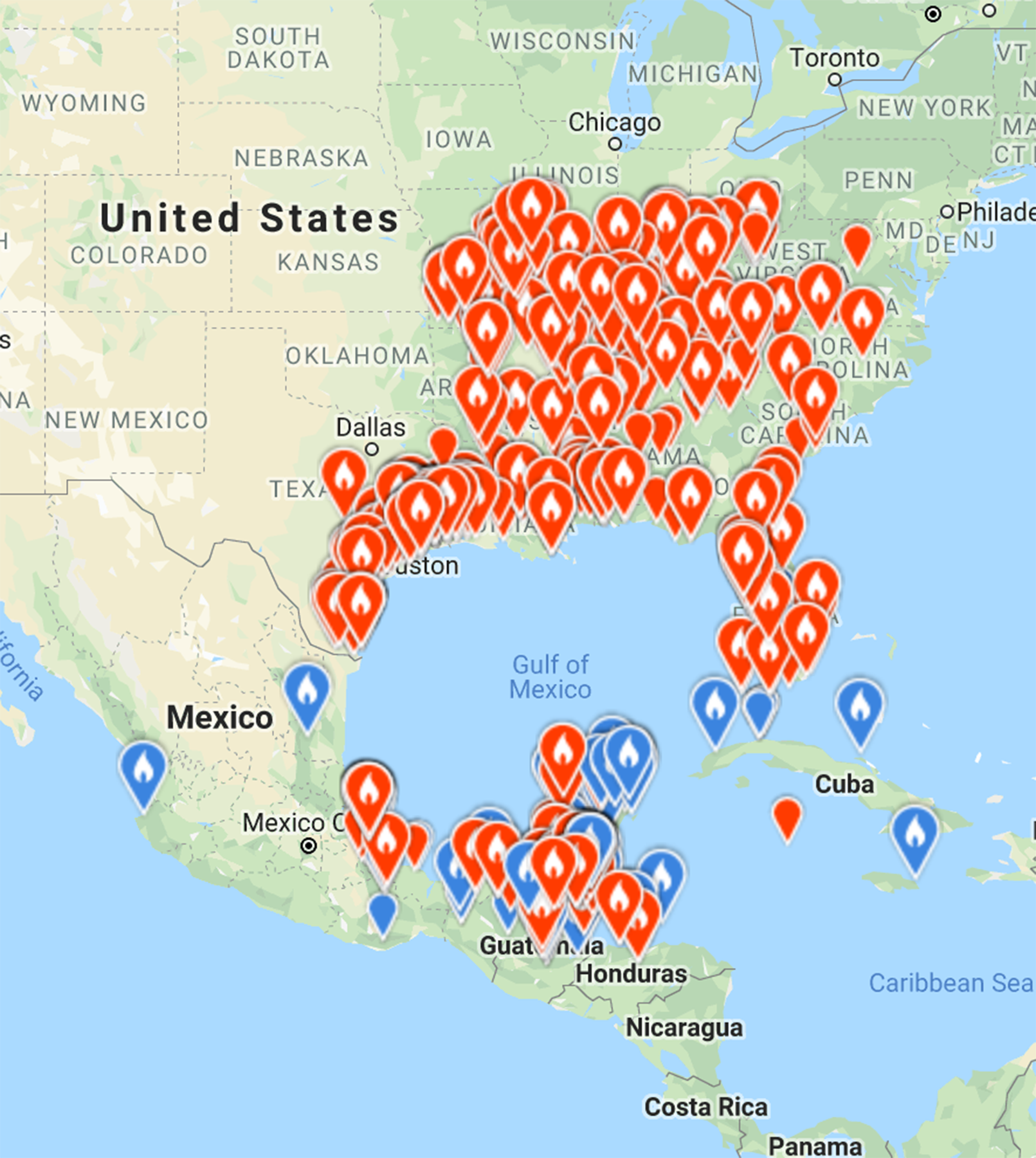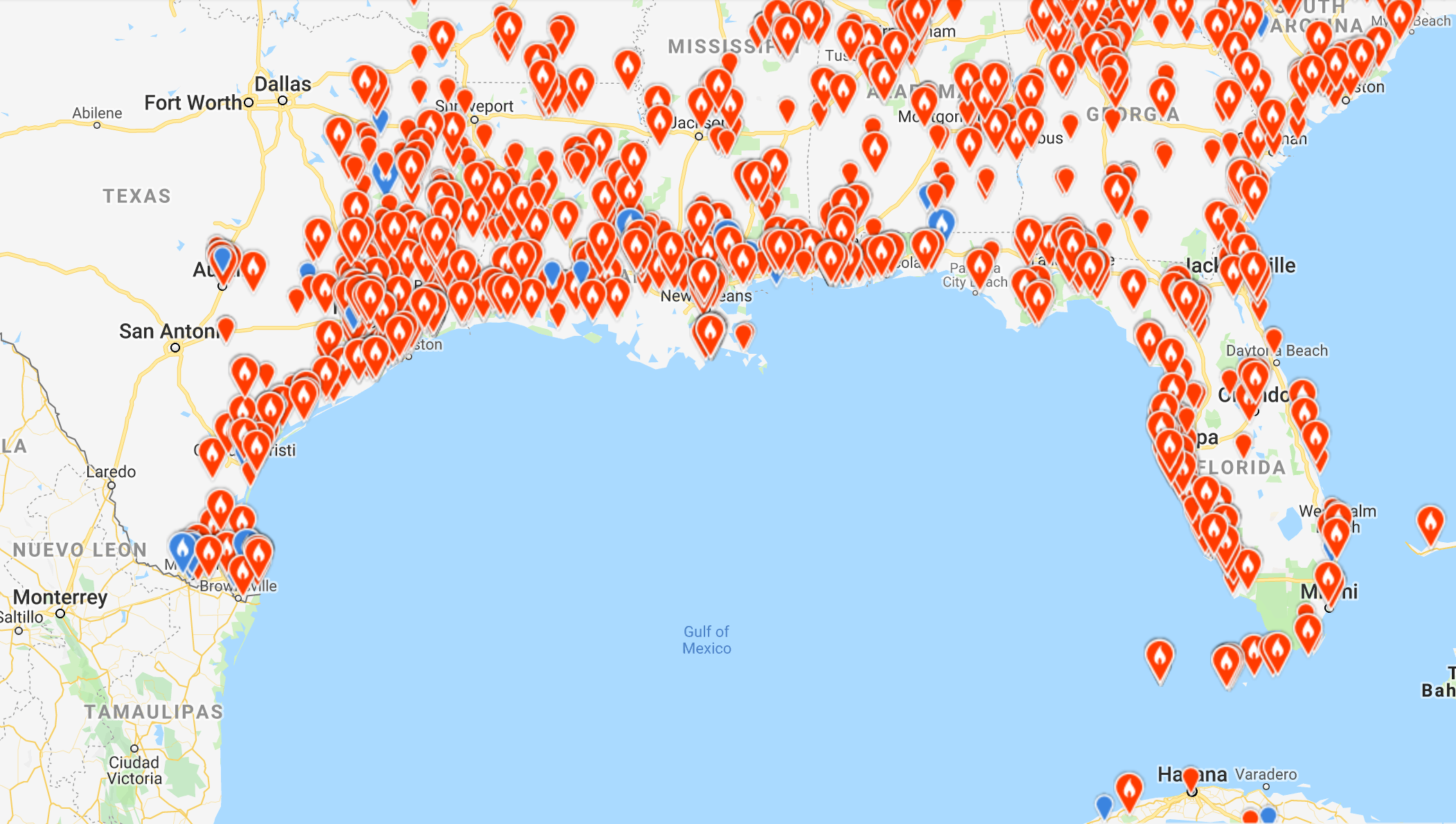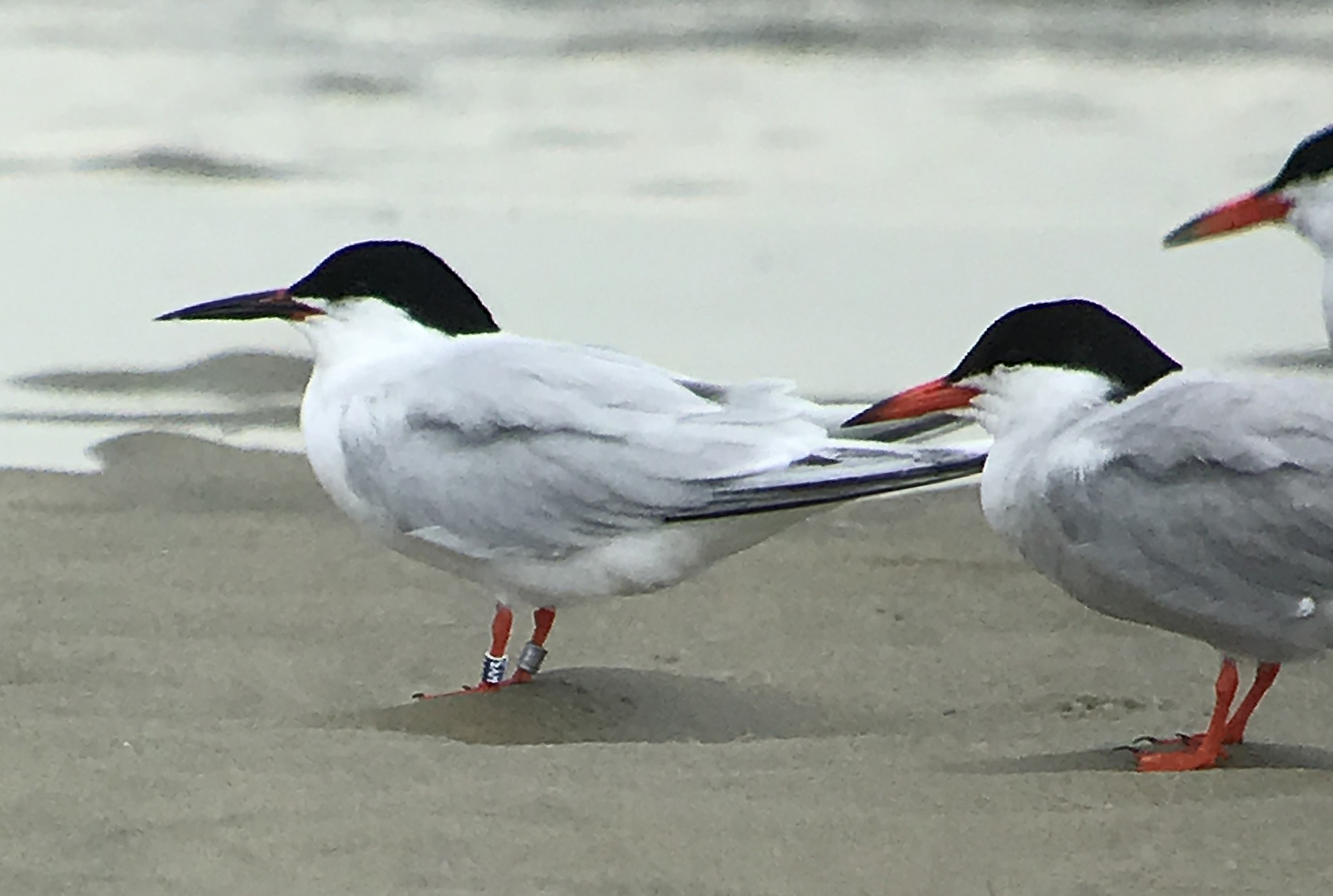So you think it is easy being a Great Blue Heron? Well, sometimes a bird needs to just relax for a minute, and meditate in its favorite yoga pose, just like humans. Oooommmmmmm.
Fall is a great time to be outside birding. It’s not quite as thrilling as spring birding, but it is still very good: the weather becomes more comfortable, biting insects are on the decline, and fall migrants are passing through on their way to their wintering grounds, joining the local breeding birds. On the downside, birds are not singing as much, and some of them are not sporting their bright breeding plumage, which can make identification more challenging. I received a request for a Bird Quiz featuring fall migrants, and I was happy to assemble such a quiz. In this quiz I do not include fall shorebirds or raptors, but restrict the quiz to species that you might find on a woodland stroll; warblers, vireos, kinglets, sparrows, finches, and more. Click here to start the quiz.
The past two days I have been busy assembling a list of all the bird species that have been seen in Ocean County, and only later finding out that other longer-term county birders generated their own lists. Comparing these lists, at least 410 species have been seen in the county, and perhaps as high as 420 species. Some of the documentation is quite old and some of the participants are now dead, so depending on whether we are cautious or generous with accepting the older sightings, that is where it stands.
To some extent, the exact number is not so important to me. What WAS more interesting to me was the next step: creating a list of species that have been seen in NJ, but have NOT yet appeared in the county, with an eye toward predicting those that are likely to be found here in the near future. The top five missing species in my opinion are as follows:
1. Trumpeter Swan. Their populations are increasing outside NJ, the first-ever sighting in NJ happened in 2012, and they have appeared in at least five NJ counties including neighboring Monmouth and Burlington counties. It’s just a matter of time. The trick is distinguishing them from the similar and more numerous Tundra Swans.
2. Fork-tailed Flycatcher. They have appeared in NJ approximately every other year over the last decade and have been spotted in six NJ counties. We are due.
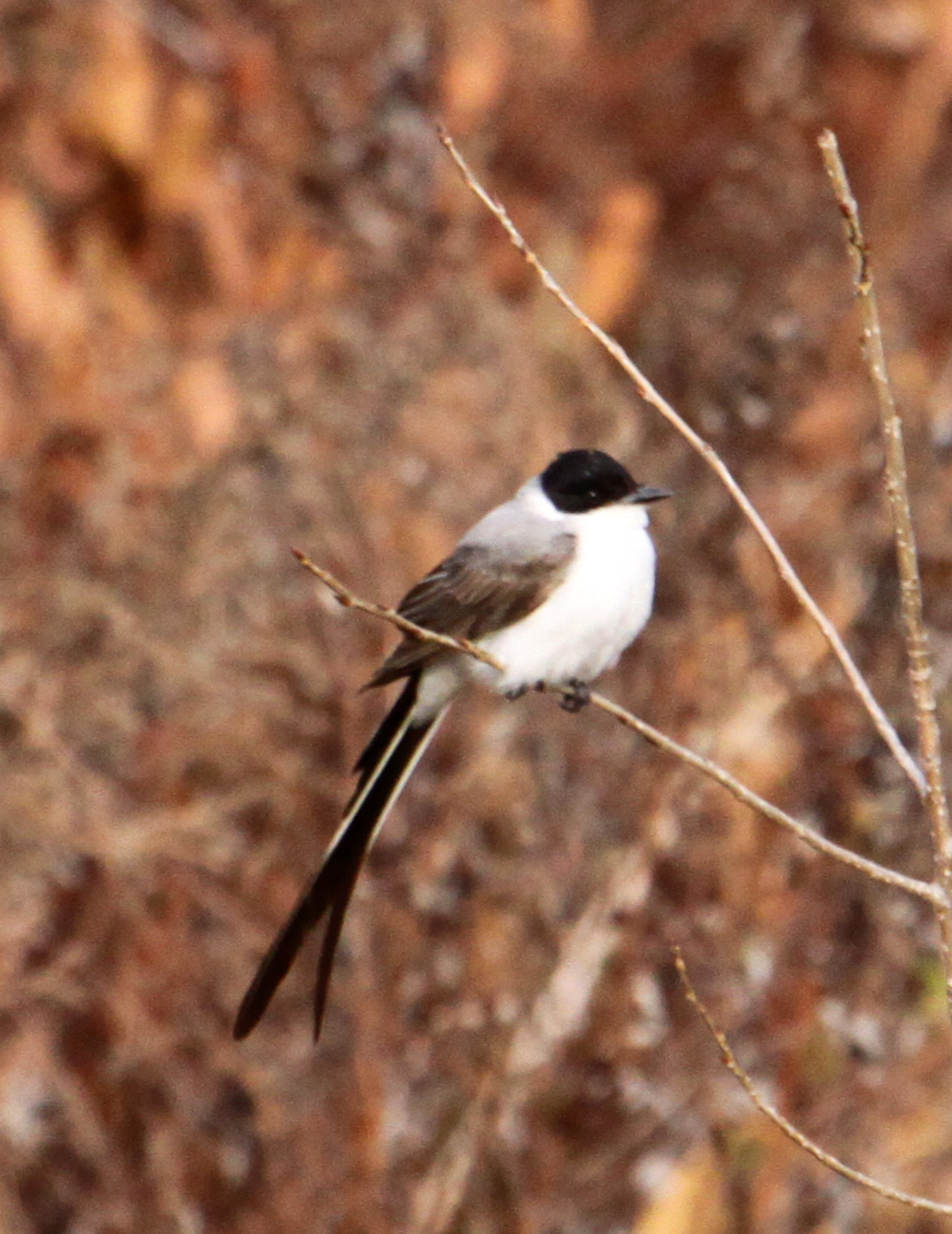
A Fork-tailed Flycatcher. They are conspicuous enough that if one is around, somebody would notice it.
3. Brewer’s Blackbird. There have been at least 21 sightings in NJ, but none here yet. C’mon, OC birders…sort through those blackbirds.
4. Little Egret. There has been only one Little Egret spotted in NJ, but with so much coastline and salt marsh, OC is a good bet for the second one hiding among all those Snowy Egrets. Most likely location: Great Bay Boulevard.
5. Mew Gull. I know of only two Mew Gull sightings in NJ, but once again, with all that coastline, there has to be more hiding in the gull flocks.
Other species that have not yet been found in the county (in Greg’s relative order of likelihood):
Brown-headed Nuthatch
Common Ground-dove (edit: the first county record was found Nov. 11, 2020)
Calliope Hummingbird (edit: the first county record was found Dec. 11, 2020)
California Gull
Spotted Redshank
Elegant Tern (edit: first county record was found Nov. 27, 2022)
Sharp-tailed Sandpiper
Vermilion Flycatcher
Mountain Bluebird
Pacific Golden-plover (edit: the first county record was found May 15, 2021)
Neotropic Cormorant
Golden-crowned Sparrow
Red-necked Stint
Little Stint
Zone-tailed Hawk
And since we’re looking into that crystal ball, how about a wild guess for a new species for New Jersey being seen in our county? My nomination: how about a Limpkin showing up in one of our cranberry bogs?
Keep an eye out for these species or other rarities and let’s see how accurate these predictions are five years from now.
This morning I was wondering which state has recorded the most bird species. Which led to wondering which state has the second-highest total. Which led to wondering where my home state of New Jersey ranks. Which led to….well, you get the idea. I could never stop with a single simple question, so I had to assemble a table listing the number of species recorded in each state. The totals were obtained from Wikipedia and therefore they are not all up-to-date. But at least it is a start.
As expected, California and Texas were at the top of the list. Arizona and New Mexico (ranked #3 and #4 respectively) fare incredibly well considering that they don’t have a coast. Only two of the top ten states are from the east (do you sense my bird envy rising?). NJ ranks at #16…not bad for such a small state. But there were some surprises for me as well. I would not have expected Oregon to have recorded more species than Alaska with its enormous size and all its Asian rarities. It was unexpected to me that relatively small Massachusetts tops more than 500 species. My current home county (Ocean County NJ) has recorded at least 410 species, which is a higher species total than eight states. Maybe you’ll find some surprises in this list too.
 Of course, this makes me wonder how many species have been seen in every country.
Of course, this makes me wonder how many species have been seen in every country.
But I’m not going there. That’s enough numbers for today. Time to go out and find some birds.
It is hard to go outside these days without feeling like there aren’t as many birds around as there used to be. Well, finally there is a detailed study to document that decline. According to an analysis by an international team from seven institutions, the North American bird population has declined by nearly 30% over the last 50 years. This research, which was published in the journal Science this past week, shows massive losses among U.S. bird populations—with steep declines in every habitat. For example, grassland bird populations have decreased by 53%, shorebirds have declined by 37%, and boreal forest birds have declined by 39%. The report is sobering, revealing a classic canary-in-a-coal-mine scenario, and should be read and understood by everybody, not just by birders. Click here to view a summary of the report.
More than 90% of the total loss of birdlife in the U.S. and Canada comes from just 12 avian families, including familiar families such as sparrows, warblers, blackbirds, and finches, and they are all decreasing. Multiple common or familiar species have declined more than 40% within that interval, including Ruddy Turnstone (down 80%), Northern Bobwhite (down 78%), Eastern Meadowlark (down 80%), and Baltimore Oriole (down 44%). Diverse species such as Bobolink, Chimney Swift, Black-billed Cuckoo, Cape May Warbler, Long-eared Owl, Eastern Whip-poor-will, and Olive-sided Flycatcher have all suffered strong declines. Click here to view the report on the state of the birds in 2019.
What has caused the decline? Ultimately, the problem boils down to having too many people on this planet. In 1900 there were 1.6 billion people on earth; by the year 2000 there were 6 billion, and by 2050 world population is expected to reach 9.6 billion people. This growth is not sustainable, since the earth has limited resources. We (not sharks) are the top predator, and our consumer society means just that…we consume and consume and consume, and the planet and nearly everything else that lives on it suffers. The result is extensive habitat loss to provide homes and food and supplies for the ever-growing population, resulting in loss of plants and animals that are lower on the food chain. As our plants, insects, and other animals continue to dwindle it ultimately will come back and hurt humans as well. I highly recommend watching a video presentation by Sir David Attenborough that puts population growth in perspective. Human-caused habitat loss is the main cause of bird deaths, followed by domestic and feral cats, window and building strikes, cars, collisions with power lines, wind turbines, and continued hunting/harvesting.
To reverse this process, steps have to be taken at governmental levels, such as protecting endangered species and passing legislation and funding efforts to protect wetlands and grasslands. But what can we do as individuals to help the recovery? Seven simple steps are suggested on the Cornell web site, including keeping cats indoors, switching to drinking shade-grown coffee, reducing plastic consumption, not using pesticides on our lawns, and promoting native plants. A more detailed description of those seven steps can be found by clicking here. It would help if we all do our part to keep birds and other wildlife from declining further.
I seem to be on a Roseate Tern fixation lately. We have been searching successfully for them in spring for the past three years, I posted recently about how they seem to be increasing in NJ over the past decade or so, and now Jeanine and I just found our first fall Roseate that I think merits some discussion.
If you want a brief recent description of their local history, you can click here, but suffice it to say that sightings of Roseates are increasing over the past few years, but locally they occur more often in spring than in late summer / fall. This might be partly due to the fact that they are easier to identify in spring, when they tend to stand out among other medium-sized terns due to their black bills (when Forster’s Tern and Common Terns usually have orange bills), long tail, and overall pale plumage. In fall the bills of Common Terns and Forster’s Terns also turn black, and it can be tough to find a tern with a thinner black bill among all the other medium-sized black-billed terns.
But while scanning through a flock of Common Terns this week in the Sedge Islands, one bird stood out as having light plumage. It did have what appeared to be a longer narrower bill, but was it real, or was it just birder’s imagination trying to turn it into a rarer bird? It didn’t have a long tail, which argued against Roseate. As we approached closer, we did see that it was banded, having a yellow band with black lettering, but a few weeks ago we had an interesting and confusing Common Tern that was banded, and previous Roseates that we found all had blue bands with white lettering. Finally, we knew that Roseate fall sightings are rare here in Ocean County, with only two eBird reports ever from August, and none in September. Because we were in a canoe, we didn’t have our field guides with us, so we leaned toward it being a Roseate, took lots of photos (too many of which ended up being overexposed) and hoped that when we got home we could figure it out.

Here is the bird isolated, where it is tough to make comparisons. Overall it looks bright and with a longish thin bill. Note the black edges to the outer primaries, which will become relevant later.
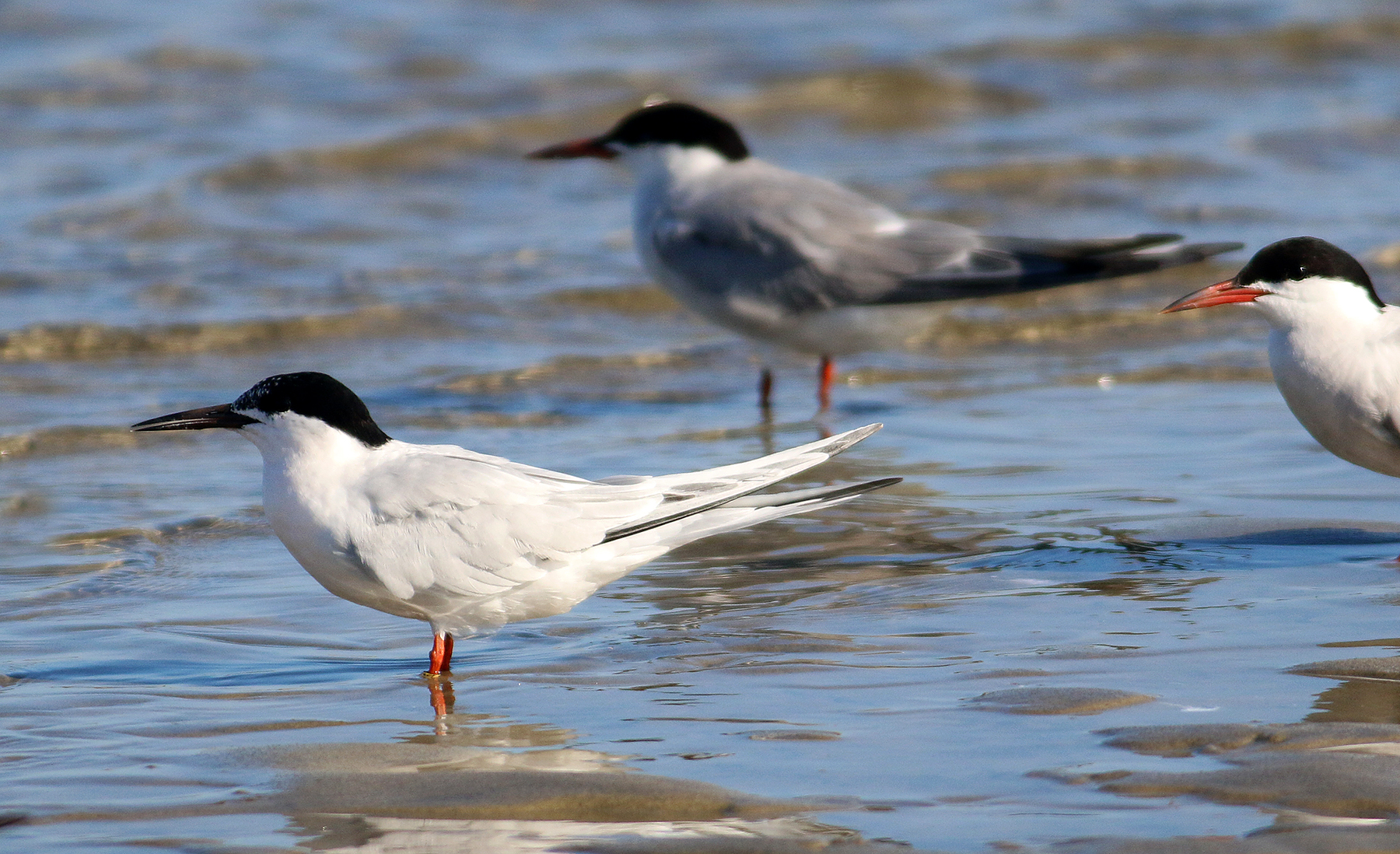
Now the bird looks even brighter when compared to a nearby Common Tern, and indeed the bill looks slightly thinner too. I find that brightness can change dramatically when a bird turns, but here they are facing the same direction.
Before we get to the thrilling conclusion, a few details about the distribution of Roseate Tern might be in store.
Roseate Terns can be found world-wide, nesting on offshore islands. The population here in the northeast US is endangered, with the two largest breeding colonies, each with ~2,000 pairs, located on Great Gull Island (NY) and near Buzzards Bay (MA). After breeding, they stage until late summer in Cape Cod before migrating southward. So this is the narrow fall window for spotting them on coastal beaches in our area.
Now back to our photos. We already saw how bright this bird appeared compared to the surrounding Common Terns. In some photos the bill indeed looks longer and narrower.
In some photos where the bird is resting we see that the two outer primaries are black, which is good for Roseate. The best flight photo however, shows that six primaries are darkish gray in flight, seemingly arguing against Roseate. In support of Roseate, however, those six primaries are dark on the forward half of the feathers and light on the rear half.
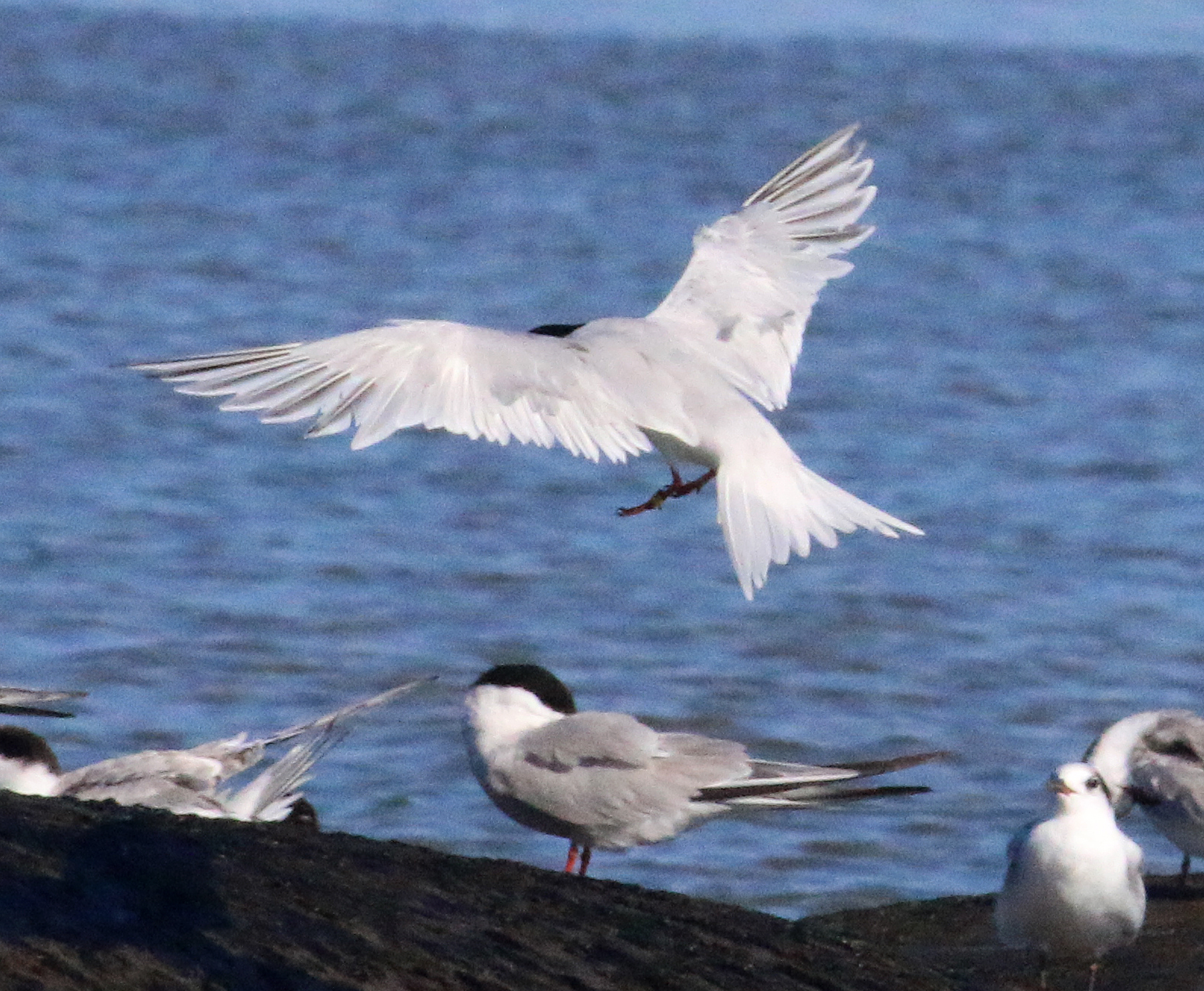
Finally we see the bird in flight. It lacks the long outer tail feathers, but I only count four feathers on each side of the tail, so presumably the longer feathers are molted or worn.
The tail completely lacked the long outer retrices, but upon closer examination, I see only four tail feathers, so presumably the outer feathers are molted away at this time of year.
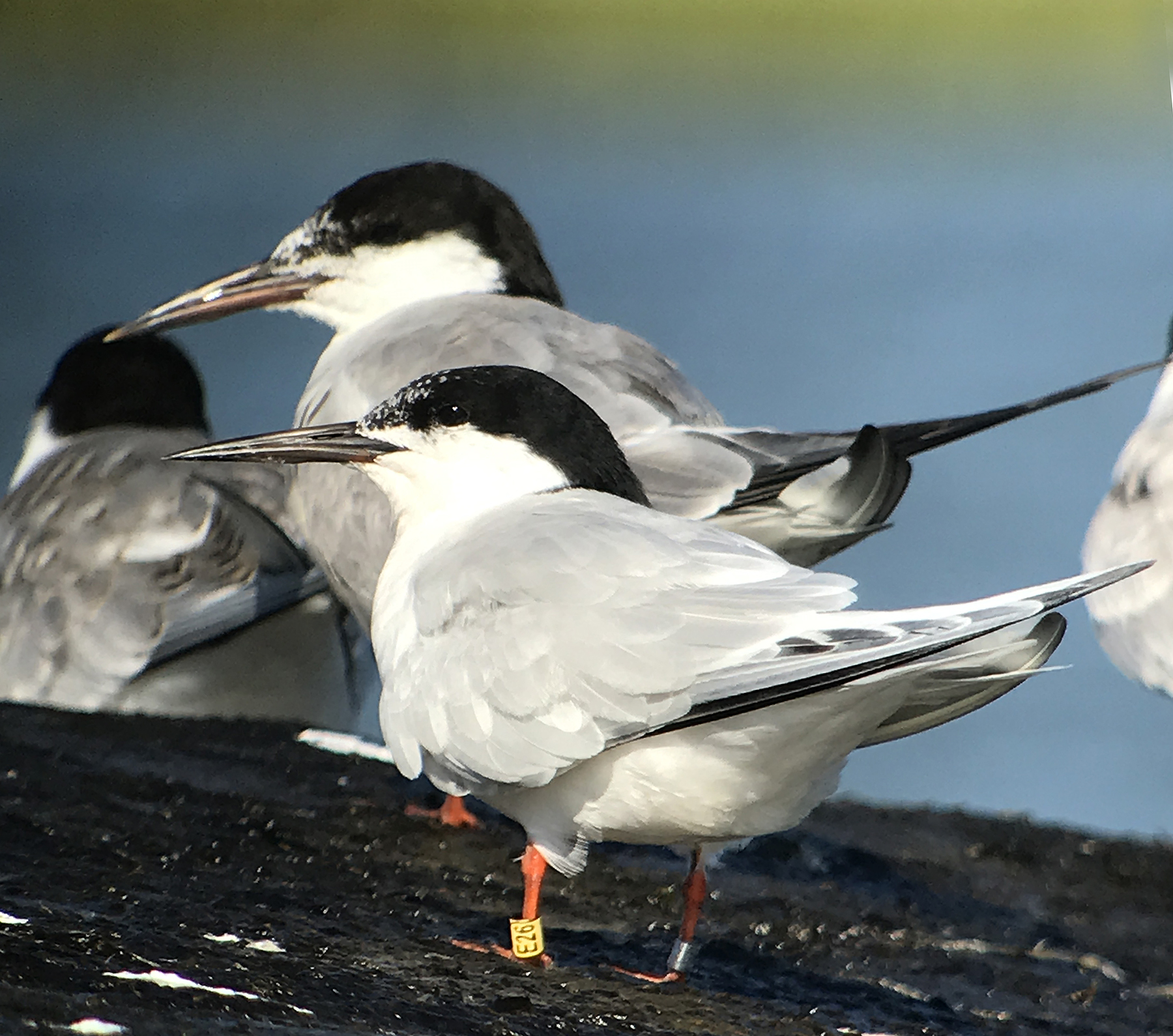
Here we get good documentation of the banding code, but the bill looks only slightly different from the Common Tern.
Overall, we were now convinced that we had our first fall Roseate, so we submitted a report to the bird banding lab, and within two days the report came back positive. Our Roseate Tern was banded in 2017 in CT, being too young at the time to fly. So this bird is two years old, and should be ready to breed next year.
It was a great lesson for us on the finer points of how to identify Roseate Tern in fall.
Roseate Terns in NJ
On July 3 Jeanine and I took our nearly-weekly summer venture into the Sedge Islands, and although as expected for this time of year there wasn’t much bird diversity or numbers yet, we were rewarded with spotting a Roseate Tern. Last year we found our first-ever Roseate Terns in NJ on July 12, (actually, not a single Roseate, but a group of three), and we continued to see them for the next three weeks. This year up to five Roseates have been reported sporadically but regularly from the nearby Island Beach North Natural Area.
So that got me to thinking. Are Roseate Terns becoming more common to see in NJ (and more specifically here in Ocean County) as their population increases, or are people just reporting them more due to heightened awareness of how to recognize them combined with eBird and instant text services that make their locations known to other birders? I still don’t know the complete answer, but they are indeed being spotted more frequently here based on eBird reports. I looked at the eBird records for Ocean County for the past seven years, and here are the results.
From 2000 through 2013 there were no reports of Roseate Terns in Ocean County.
In 2014 there were three July reports from Island Beach State Park (IBSP).
In 2015 there was one bird in Ocean County (Holgate in July).
In 2016 there were two sightings in Ocean.
In 2017 there were two sightings in Ocean County, both in July.
In 2018 there were multiple sightings in the Sedge Islands in a three-week span in June and July. Because the Roseates were banded, it was clear that multiple birds were involved.
In 2019 we have had multiple sightings centered around IBSP, between the Sedge Islands, the northern Natural Area of IBSP, and in Barnegat Inlet, with up to four Roseates being seen at a time.
So there we have it; we are experiencing a steady increase in sightings of Roseate Terns in Ocean County, with this species being absent (in eBird) until 2013, transitioning to being rare but regular for four years, and for the past two years becoming uncommon but expected in increasing numbers, with Island Beach State Park becoming a reliable hotspot, peaking in July. Roseates tend to disperse northerly up to Cape Cod after breeding, so if you haven’t seen any yet this year, now is the time to look before they are all gone.
I used to think that most, if not all, birds migrated essentially in a straight north-to-south direction, with potential sidetracks due to geographical anomalies such as large bodies of waters, mountain ranges, deserts, etc. That idea was proven to be wrong for me after following up on the sightings of a banded Tundra Swan, which migrates cross-country from Alaska to New Jersey. I’ve also heard of the four great North American flyways (the Atlantic, Central, Mississippi, and Pacific Flyways), which are typically drawn as relatively north-south arrows. As with most things in life, things are not nearly quite so simple.
This spring I grew curious about whether the spring migrants that arrive here in NJ travel via the same broad route, so I investigated eBird sightings for several species. The results were interesting. I saw at least three patterns. The first pattern was exemplified by species such as Nashville, Canada, and Mourning Warbler, that travel through Central America, up through Mexico, and enter the US almost exclusively via Texas and then spread out thereafter.
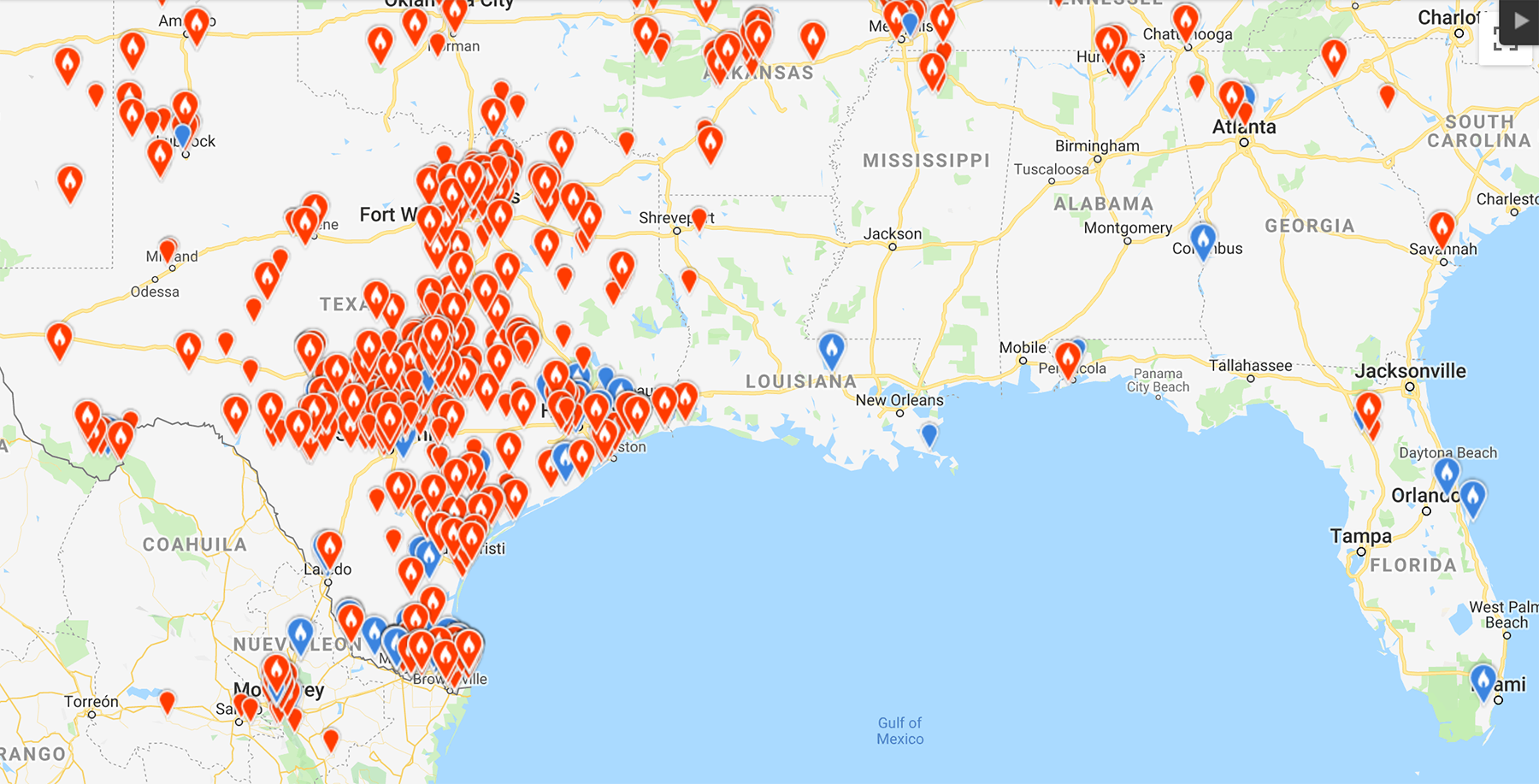
Nashville Warbler in early May appears extensively in Texas, with very few sightings in Florida or the other gulf coast states.
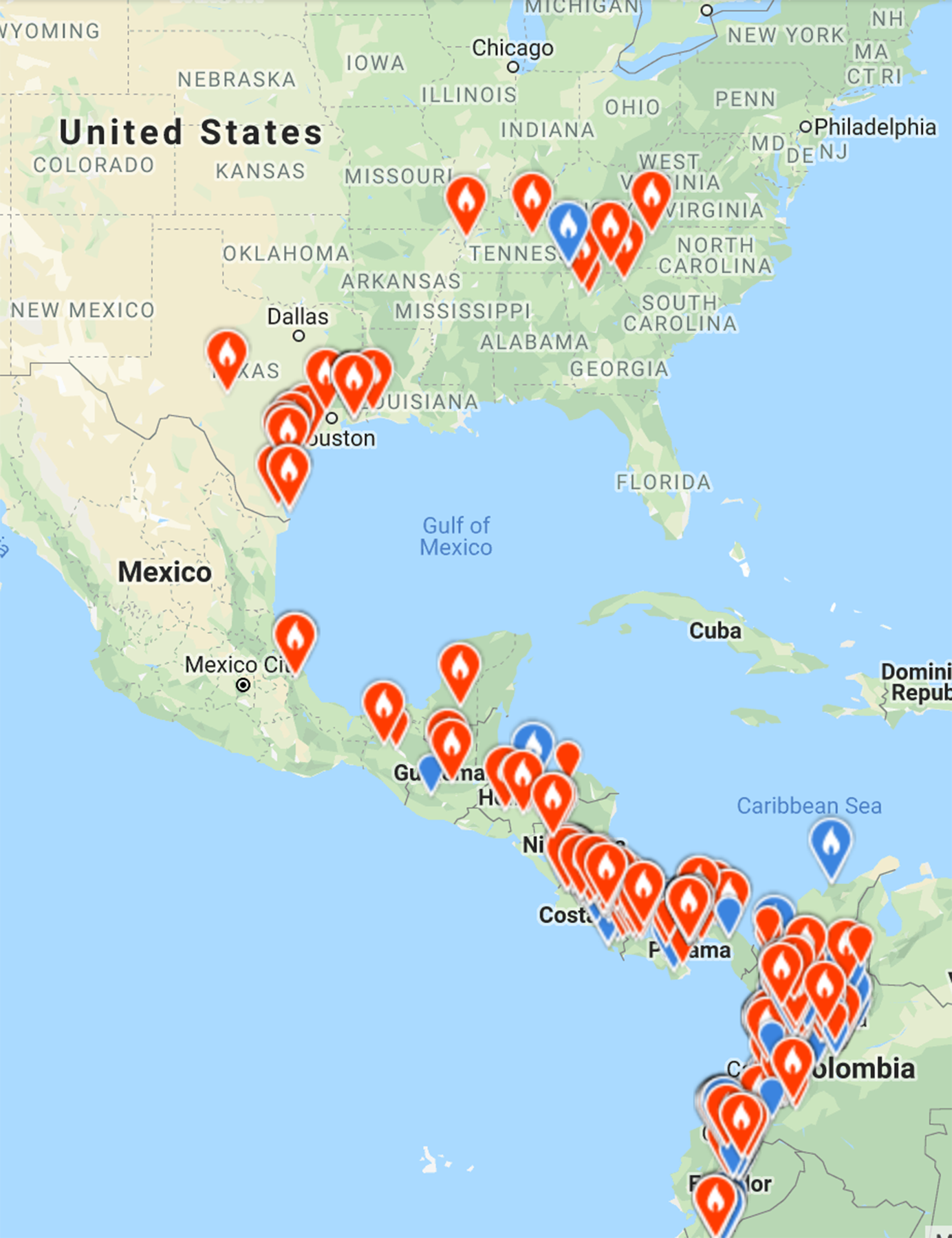
Canada Warbler appears to avoid a trans-gulf migration, coming northward through Central America, through Mexico, and Texas.
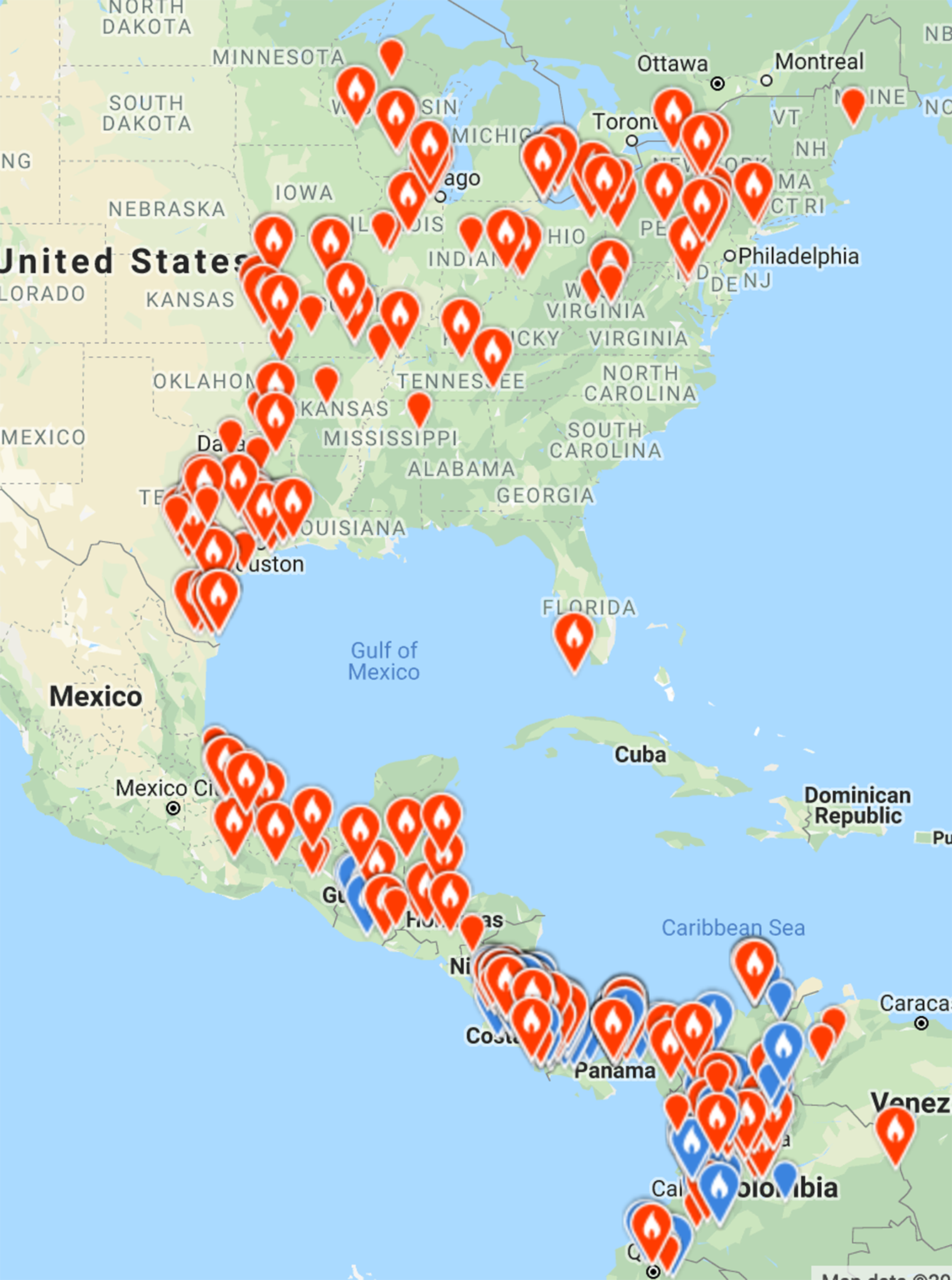
Mourning Warbler is another species that seems to prefer traveling over land, using the Central America-Mexico-Texas route, and then fanning out eastward as it continues its migration.

It’s not just Warblers. Here is the pattern of Olive-sided Flycatcher sightings in early May, again coming up through the central US, although with a separate population then splitting and traveling up the Pacific coast. This bird sure prefers to avoid flying over large bodies of water.
A second pattern was shared by Tennessee, Hooded, Blue-winged, and Kentucky Warbler, which each enter the US through the entire southeastern coast, from Florida through the gulf states and Texas.
A final pattern was best exemplified by Cape May Warbler and American Redstart, which seem to enter the US primarily from the Caribbean islands and then up through Florida into eastern US.
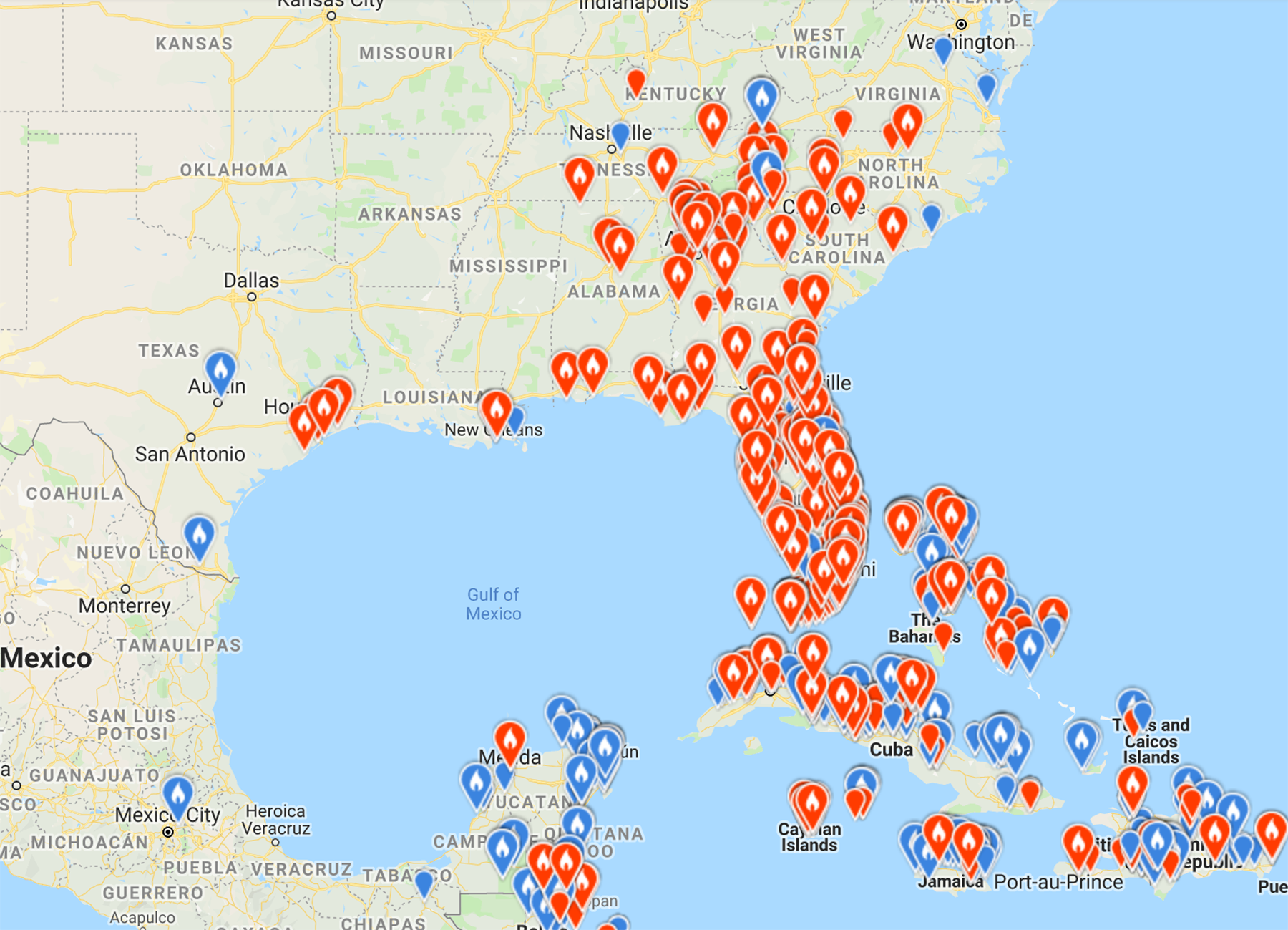
Cape May Warbler comes up primarily through the Caribbean islands through Florida and up the east coast.
So what does this all mean? Well, we should appreciate the variability in how birds arrive or move through our area. Second, it helps to explain why some species are just hard to find, depending on our location and their respective migration route.
As I did last year, I will be keeping track of when I first see new spring arrivals, to see how consistent they are from year to year. It should be interesting to compare with last year’s spring arrival dates.
- March 17 Pine Warbler
- March 19 Wood Duck
- March 21 Osprey
- March 21 American Oystercatcher
- March 21 Eastern Phoebe
- March 24 Tree Swallow
- March 24 Chipping Sparrow
- March 25 Blue-winged Teal
- March 27 Laughing Gull
- March 27 Forster’s Tern
- March 27 Wilson’s Snipe
- April 4 Blue-gray Gnatcatcher
- April 4 Yellow-throated Warbler

- April 4 Palm Warbler
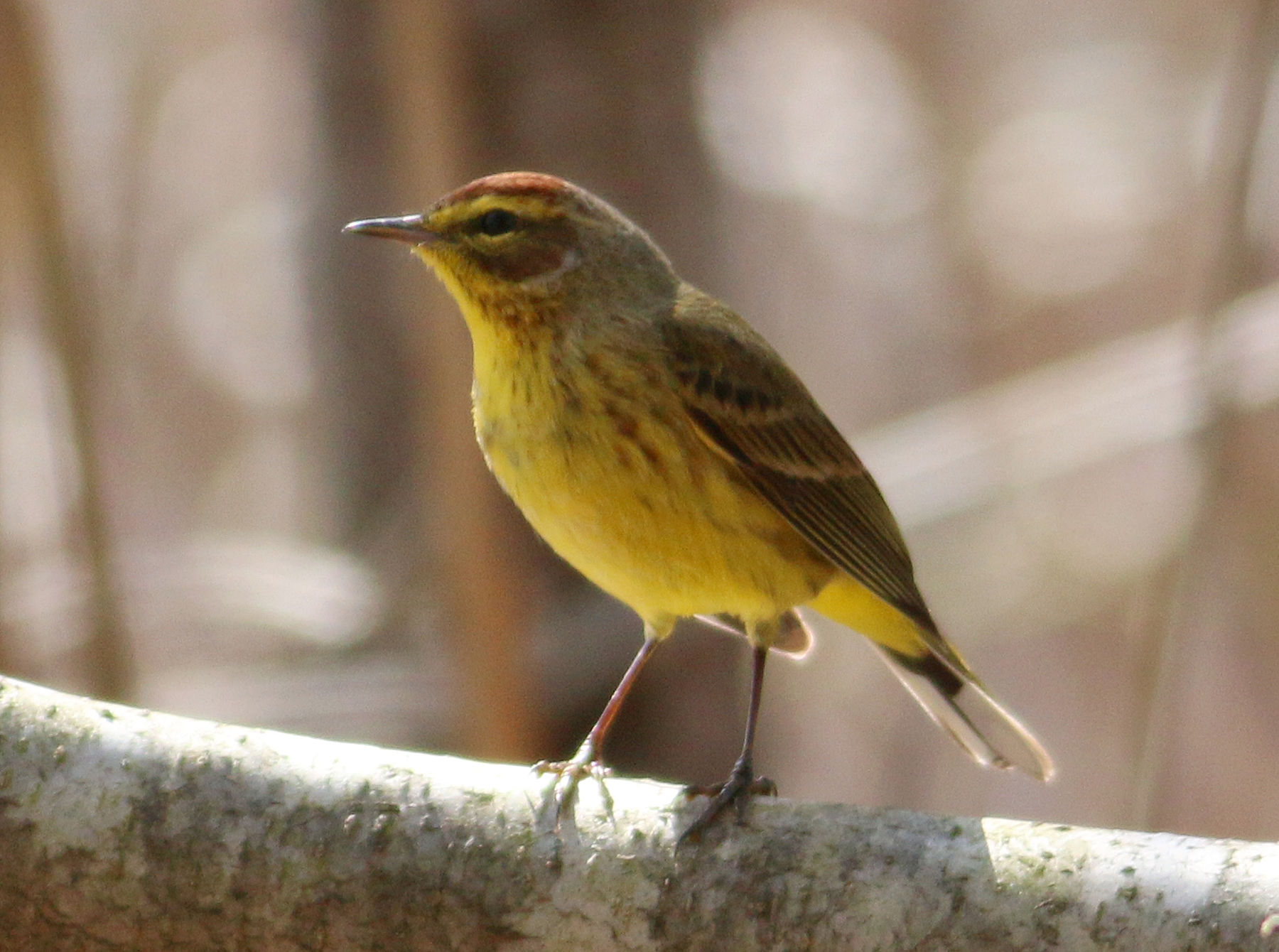
- April 6 Glossy Ibis
- April 6 American Bittern
- April 10 Lesser Yellowlegs
- April 10 Forster’s Tern
- April 11 Barred Owl
- April 11 Swamp Sparrow
- April 13 Clapper Rail
- April 13 Eastern Towhee
- April 14 Barn Swallow
- April 15 Common Yellowthroat
- April 15 Black-and-white Warbler
- April 15 White-eyed Vireo
- April 15 Eastern Kingbird
- April 18 Ruby-crowned Kinglet
- April 18 Prothonotary Warbler
- April 18 Ruby-throated Hummingbird
- April 18 Worm-eating Warbler
- April 18 Northern Parula
- April 19 Broad-winged Hawk
- April 19 Green Heron
- April 20 Northern Rough-winged Swallow
- April 20 House Wren
- April 25 Red-eyed Vireo
- April 25 Hooded Warbler
- April 25 Louisiana Waterthrush
- April 25 Pileated Woodpecker
- April 25 Great Crested Flycatcher
- April 25 Black-throated Green Warbler
- April 25 Black-crowned Night-heron
- April 25 Yellow-crowned Night-heron
- April 27 Hooded Warbler
- April 27 Prairie Warbler
-
- April 28 Nashville Warbler
- April 28 Wood Thrush
- April 28 Scarlet Tanager
- April 28 Yellow-throated Vireo
- April 28 Blue-headed Vireo
- April 28 Baltimore Oriole
- April 30 Brown Thrasher
- April 30 Yellow Warbler
- April 30 Warbling Vireo
- May 2 American Redstart
- May 2 Blue-winged Warbler
- May 2 Tricolored Heron
- May 2 Willet
- May 2 Orchard Oriole
- May 2 Black-throated Blue Warbler
- May 4 Northern Waterthrush
- May 4 Cerulean Warbler
- May 4 Solitary Sandpiper
- May 4 Chimney Swift
- May 4 Yellow-billed Cuckoo
- May 4 Rose-breasted Grosbeak
- May 4 Blue Grosbeak
- May 4 Swamp Sparrow
- May 5 Least Sandpiper
- May 6 Little Blue Heron
- May 6 Yellow-throated Vireo
- May 6 Black-bellied Plover
- May 6 Least Flycatcher
- May 6 Veery
- May 6 Swainson’s Thrush
- May 6 White-crowned Sparrow
- May 6 Indigo Bunting
- May 8 Whimbrel
- May 8 Black-bellied Plover
- May 8 Semi-palmated Plover
- May 8 White-rumped Sandpiper
- May 8 Short-billed Dowitcher
- May 8 Spotted Sandpiper
- May 8 Gull-billed Tern
- May 8 Caspian Tern
- May 8 Black Skimmer
- May 8 Blackpoll Warbler
- May 8 Field Sparrow
- May 8 Marsh Wren
- May 8 Yellow-breasted Chat
- May 11 Red-headed Woodpecker
- May 16 Bay-breasted Warbler
- May 16 Blackburnian Warbler
- May 16 Cape May Warbler
- May 16 Chestnut-sided Warbler
- May 16 Magnolia Warbler
- May 16 Wilson’s Warbler
- May 16 Piping Plover
- May 18 Eastern Wood-pewee
- May 25 Willow Flycatcher
- May 25 White-faced Ibis
- May 26 Common Nighthawk
- May 26 Least Tern
- May 30 Canada Warbler
- May 30 Mourning Warbler
- May 30 Alder Flycatcher
- May 30 Yellow-bellied Flycatcher
- June 15 Summer Tanagerd
- June 15 Acadian Flycatcher
- June 19 Least Bittern
- July 3 Roseate Tern
Would you like to test your knowledge of the birds of southern California? If so, try our newest slideshow BirdQuiz highlighting some species that can be seen along the coast, and in the deserts, mountains, and foothills of this diverse area. Click here to start.
